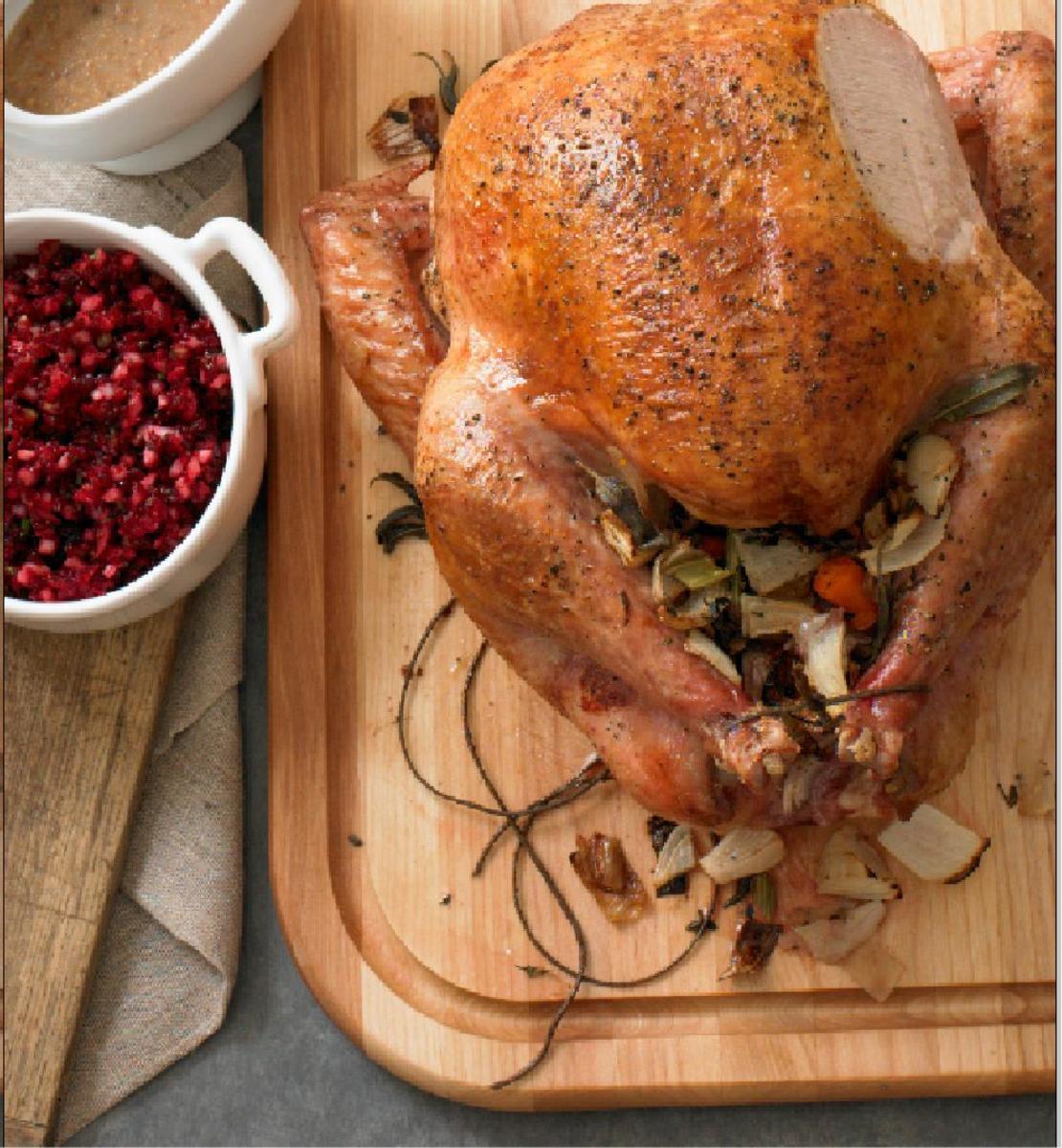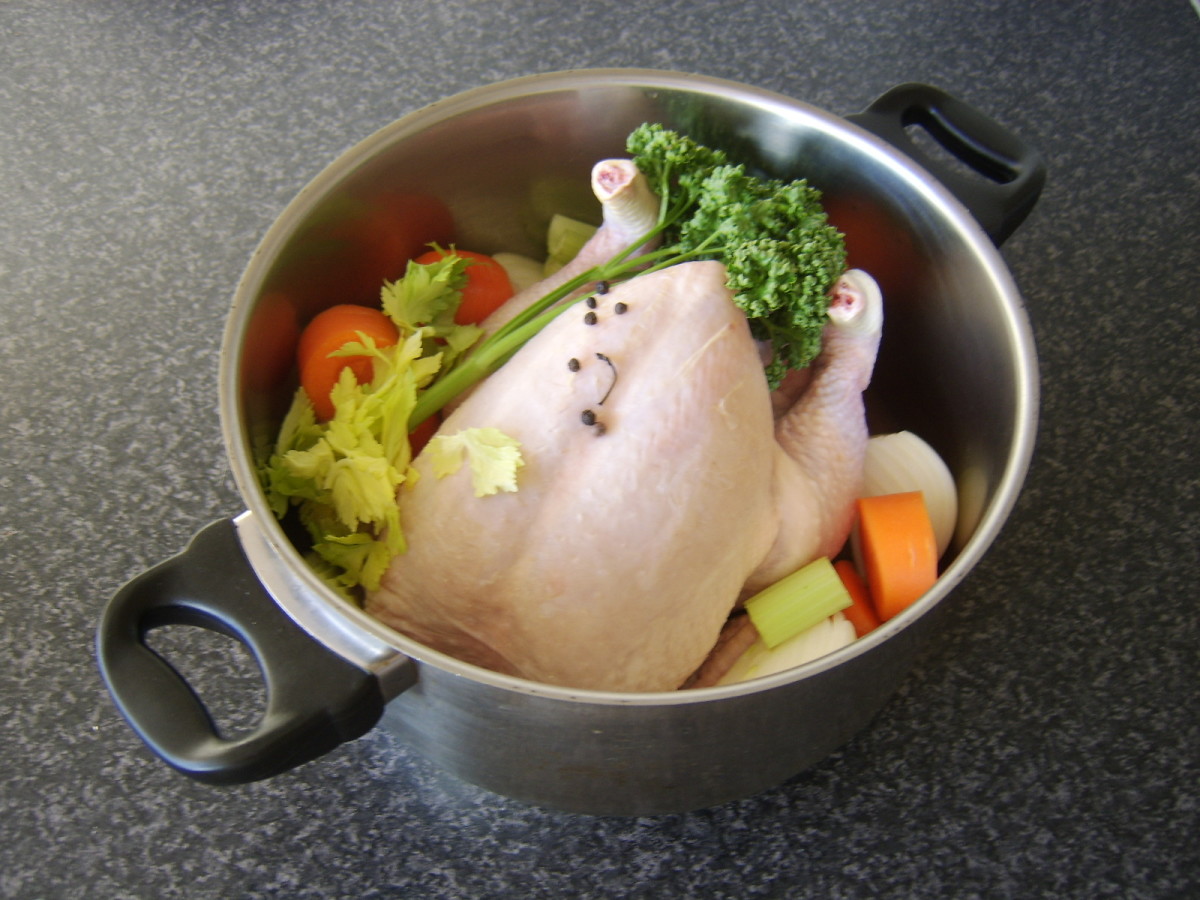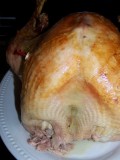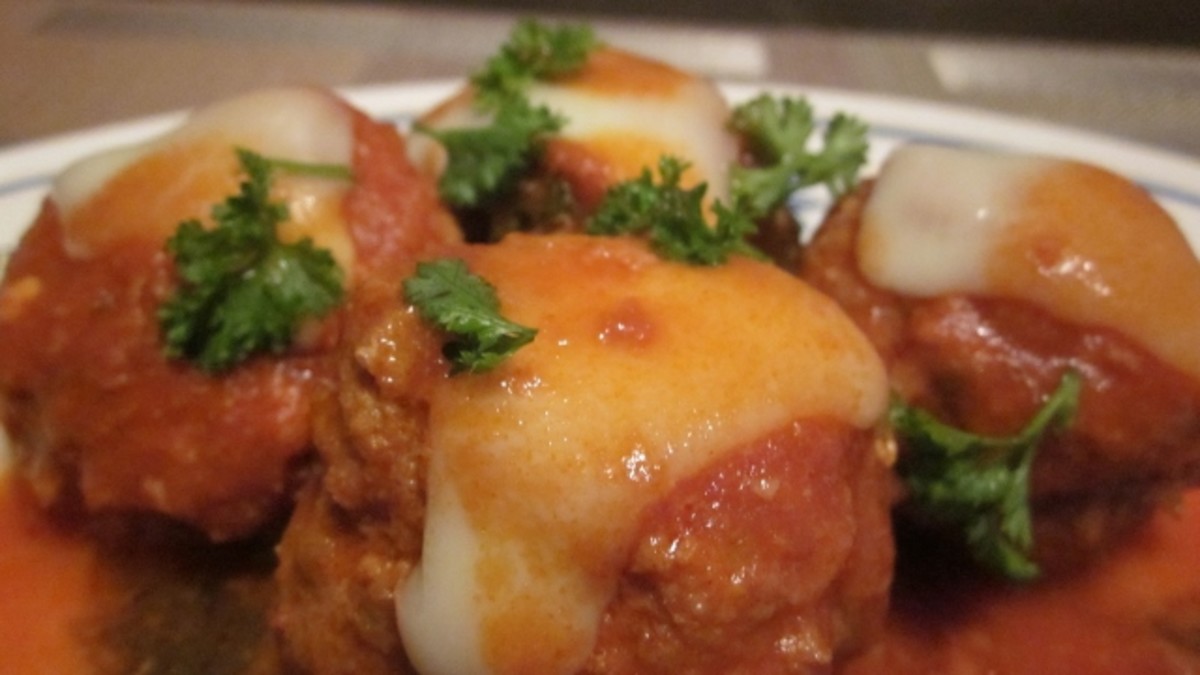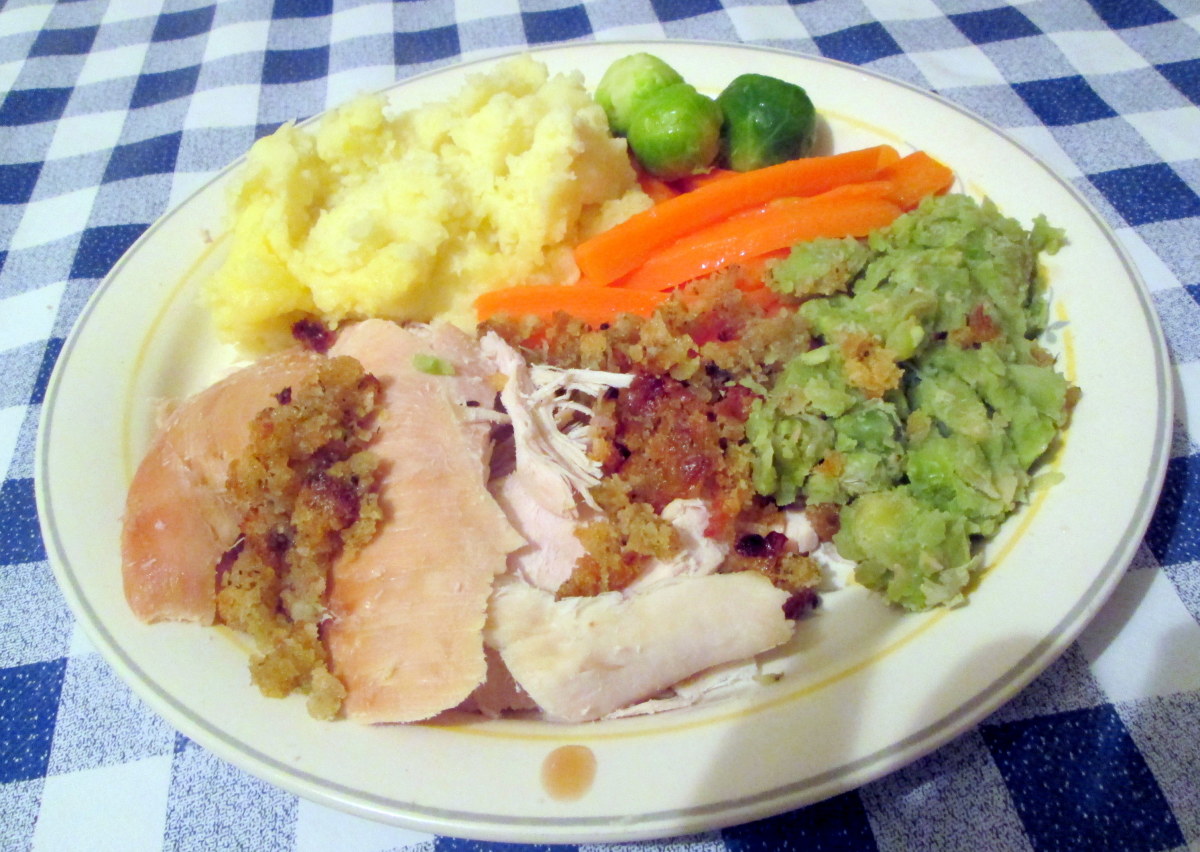Cooking A Whole Turkey, Safety Charts
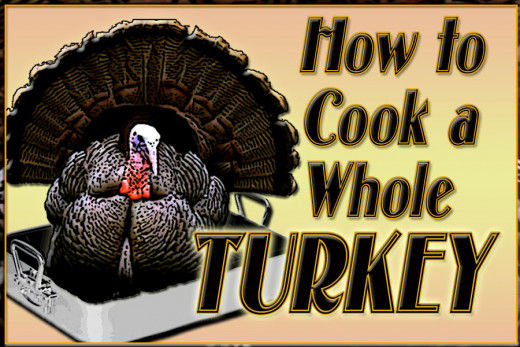
Turkey Prep Charts
No need to let the anxiety of the season get its grip on you this year, simply print out (or bookmark) the handy Turkey-Prep Cheat Sheets below and place them on the fridge. Because this year, the accolades belong to you, not the Bird!
Turkey Thawing, Cooking, Serving, and Leftovers
The Turkey. Most American holidays would not be the same without it. Roasted, fried, baked and boiled, this bird is tops on our Thanksgiving, Christmas, and almost every Holiday feast menu. However, many find that the math behind thawing, cooking and serving this delicious bird keep the illusive turkey perfection just out of reach. Instead of hoping for the best when it comes to your turkey this year, you have at your disposal a couple of very handy "Cheat Sheets" to help find that perfect holiday turkey outcome.
What Kind of Pan is Best For Cooking Turkey
How to Avoid a Screaming-hot Turkey Disaster
Using a flimsy, cheap, thin roasting pan will only serve to offer a dangerous 12-plus pound screaming-hot juggling act at the end of the day. The biggest favor you can do for yourself or the cook in your home, is to make certain the kitchen has a reliably thick and sturdy roasting pan.
Safety For Removing Turkey From The Oven
A turkey is hard enough to handle when it's cool and fresh out of the fridge, but remember this oddly shaped convex back, wiggly legs, and dense weight can become a nightmare when coming out of a 3 or 4 hour stent in a 350°F oven. If the pan you roast in is not sturdy, the act of removing the hot turkey from the oven, can end up becoming a ride to the local emergency room, or at the very least, a real waist of great turkey as it tumbles to the kitchen floor.
Roasting Pan Note:
Buying a quality roasting pan can save you a ton of turkey anguish in the long run. Just make sure which ever roasting pan you choose, offers your bird 2-inches of clear space on all four sides of the pan and is a heavy enough gauge material so it does not wobble with the turkey in it. Also, having sturdy handles to lift and move the pan with can be very helpful.

How To Thaw a Turkey
How to Safely Thaw a Whole Turkey (Or De-Chillin' The Bird)
A fresh turkey will always be the best choice for a better and more moist bird. But, this is not always (if at all) an option for most home cooks. The reasons are many—price, convenience, timing, store give away—as to why you end up with a frozen turkey. This holiday turkey may well be safe at home with you, but it stills needs to be thawed carefully and slowly in the refrigerator for several days.
THAWING THE TURKEY CHART
TURKEY WEIGHT
| IN REFRIGERATOR
| *IN WATER
|
|---|---|---|
10 to 12 pounds
| 2 Days
| 4 to 6 Hours
|
12 to 14 pounds
| 3 Days
| 6 to 9 Hours
|
14 to 18 pounds
| 4 Days
| 9 to 14 Hours
|
18 pounds and over
| 4 to 5 Days
| 14 to 24 Hours
|
*Do not be tempted to use warm or hot water to thaw the turkey, only cold water will protect the process in the safest manner.
Thawing a Whole Turkey, Chart
The cheat sheet at right will help guide you through the safe defrosting of your thanksgiving or Christmas turkey. *If you are short on time and big on ambition, a turkey can be thawed in the sink, a large bowl, or even a bathtub (for a really big turkey) filled with cold water, but you are usually still looking at an entire day. The point here, be prepared and plan ahead and your holiday turkey feast will go as smooth as,...well,... is your turkey gravy hopefully!

Cooking a Stuffed Turkey (At 325ºF)
How do you tell if a turkey is done? Wiggle the drumstick of course, if it's loose it's done,...WAY OVER DONE!
**The only safe and reliable way to determine if your holiday turkey is done to a safe, and yet moist point, is to check the internal temperature.**
COOKING TIMES FOR A STUFFED* TURKEY (AT 325ºF) CHART
TURKEY WEIGHT
| TIME
| TEMPERATURE
|
|---|---|---|
8 to 12 Pounds
| 3 to 4 Hours
| 325ºF
|
12 to 16 Pounds
| 4 to 4-1/2 Hours
| 325ºF
|
16 to 20 Pounds
| 4-1/2 to 5 Hours
| 325ºF
|
20 to 26 Pounds
| 5 to 6 Hours
| 325ºF
|
*For an unstuffed turkey, subtract 20 to 40 minutes from the total cooking time, but always check the internal temperature for safety to be sure your holiday bird is safe and cooked thoroughly.
How Do I Know When the Turkey is Done
- Place an instant-read thermometer into the thickest part of the turkey thigh, without hitting or touching the bone. It needs to read 165º to 170ºF.
- The juices must run clear with no sign of blood when you remove the thermometer.
- The breast meat will cook more quickly, so using the thigh area is the safest location to test the temperature.
- If the turkey is stuffed, you must check the temperature of the stuffing as well: It must be at least 160ºF.
- If the holiday turkey is done and the stuffing is not yet to temperature, take the turkey out of the oven, remove the stuffing to a casserole, put the stuffing back into the oven on its own to finish cooking while the bird rests.
Turkey Temperature Cheat Sheet
Using the cheat sheet at above right, you can manage the turkey cooking times for the size of the holiday turkey you have chosen to cook. However; no matter what any chart or recipe suggests:
ALWAYS MEASURE THE TURKEY AND THE STUFFING WITH A THERMOMETER FOR A SAFE AND JUICY INTERNAL TEMPERATURE!

TURKEY MATH FOR SERVING SIZE AND LEFTOVERS CHART
TURKEY WEIGHT (In pounds)
| AVERAGE SERVINGS
| AMPLE SERVINGS WITH LEFTOVERS
|
|---|---|---|
14
| 14
| 9
|
16
| 16
| 10
|
18
| 20
| 12
|
20
| 22
| 14
|
24
| 26
| 17
|
If you desire very large serving sizes and seconds as well as leftovers, allow another 1/2 pound of turkey per person.
NOTE: Manageable Turkey Size
When considering the size of your bird, be certain that you or someone within your household is going to be strong enough to lift any sized turkey into and safely out-of your oven.
How to Measure the Turkey Serving Size, Per Guest
How big is big enough, and when is big enough too big?
Cooking a turkey is probably going to be the biggest thing you cook in your home kitchen annually, and Thanksgiving and Christmas usually means many more elbows on your dining room table. And don't forget, nothing is better than holiday turkey leftovers; as they are de rigueur after all. Remember, feeding all of your guest doesn't really require a pterodactyl sized bird, but possibly a twin-set of turkeys isn't such a bad idea?
You will need to calculate just how much turkey you are truly going to need. See the serving chart "cheat sheet" at right to help you figure it out very quickly and easily, (It will also help you compute the amount of leftovers you desire).
How Big Should My Turkey Be
Now really think about this and ask yourself; "What size turkey can I actually manage?" Remember that once you get into a bird that is more than 15-pounds, it is no longer a feather weight, but rather a real heavyweight!
How To Choose The Size Of A Turkey
- The larger turkey will require a larger pan that is strong enough to take on this big bird (not a Sesame Street reference at all).
- You must also consider the size of your oven, will the turkey and the pan fit into it with at least 2 inches of room on all sides? If not, the cheat sheet below will not be on target.
- Don't forget that the bird is convex, so it requires some headroom as well.
What You Think Really Does Matter!
What part of the Turkey Do You Fight For?
Two Birds in Hand...
Should I Cook Two Small Birds Instead of One Huge Bird
I know this may sound trite, but if you have two ovens, a method to make your cooking day easier (it really will) is to prepare two smaller turkeys.
Are Two Turkeys Better Than One? (You had me at twice as much crispy skin!)
Just think;
- Two wishbones
- Four drumsticks
- Twice as much juicy breast meat
- And all of those extra turkey drippings for that-much-more turkey gravy!
Even more importantly than the list above, with a smaller turkey it is far easier to get that magic temperature between juicy white meat and fully cooked dark meat, while at the same time creating twice as much crispy roast turkey skin!
Thanksgiving and Christmas Turkey Math


